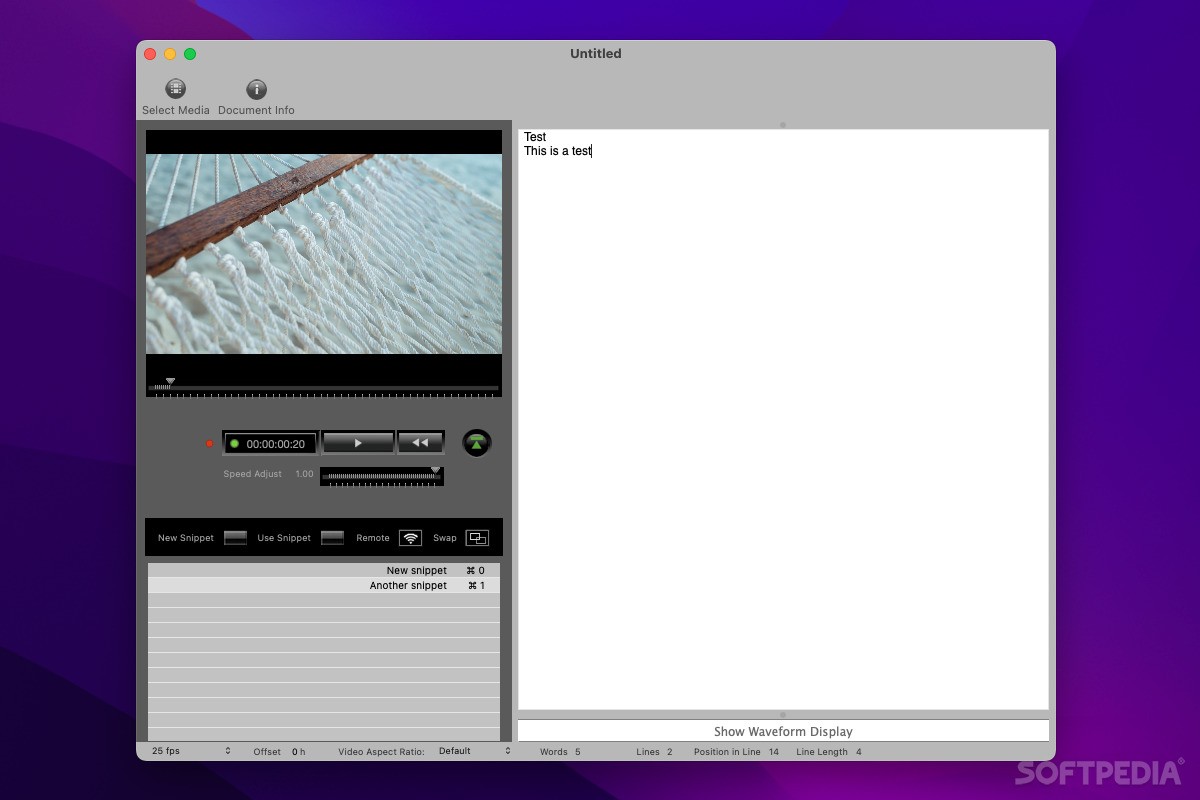
- #Annotation transcriber export no timecode software#
- #Annotation transcriber export no timecode professional#
- #Annotation transcriber export no timecode download#
#Annotation transcriber export no timecode software#
The interface is very user-friendly, and Transana is definitely the easiest transcription software I have ever tried. txt file that is usually uploaded into interrogation and concordance tools (such as Wordsmith, ParaConc or AntConc). rtf file, which may require some further work in order to obtain the. When you export your transcript, these multimedia time codes are included in an. putting the cursor in the exact point, both in the audio and in the transcript, where one wants to add a time code). Another distinctive feature is that Transana enables you to align text and audio, but this can only be done manually and inconsistently (i.e. It directly supports Jeffersonian Transcription Notation with icons and shortcuts in both the transcription and the visualization windows.
#Annotation transcriber export no timecode professional#
Transana (Version 2.05) is a software for professional researchers who want to analyze digital video or audio data, developed at the University of Wisconsin. A summarizing table will finally be provided, where basic information and features will be displayed and compared. Tools will be presented with respect to their main idea, distinctive features, usability and possible drawbacks, and accompanied by a screenshot of what the transcript looks like in the tool itself. The rationale for the choice of these particular four for comparison is that they all displayed the waveform, thus allowing for an exact quantification of pauses, and all aligned transcript and audio, thus enabling the transcriber to immediately listen to the oral features that are so difficult to write down. The goal of the workshop where the above quotation comes from, and of the present post, is, thus, to present information about and demonstrations of four of these tools, and share the views I developed during the months I spent becoming an “expert” of one or the other. To decide about usefulness and usability, it is necessary to know about the ease of use, strengths/weaknesses for specific annotation purposes, and the type of data or analysis the tool is designed for – knowledge that is usually gained only after becoming an expert in the use of a particular tool (Rohlfing et al., 2006: 99). But since at first glance, all of them look promising and offer a variety of useful features, it can be difficult for the researcher wishing to use such tools to determine whether a particular one is suitable for her or his data, research question or available computer.

As such, it will hopefully be of some use for those of you who may still be looking for the software fulfilling their specific desires, and who may hence benefit from knowing multiple tools in order to finally find their own.ĭepending on the kind of analysis one wishes to carry out, some tools may be more suitable than others. It contrasts transcriptions of the same oral data made from scratch using Transana, Xtrans, SpeechIndexer, and Exmaralda, then hints at two other tools you may use during the transcription process, namely Dragon and Xaira.

This post is a technical complement to that mainly theoretical paper, as it presents (with descriptions and screenshots that would have hardly fitted in an academic article) the tools I have personally tested in order to find the best solution for my transcription needs. Testing provides food for thought, and thoughts gradually took the form of a paper on the question of transcription which shall hopefully be published within the end of my PhD.
#Annotation transcriber export no timecode download#
I have been testing transcription tools for years, and the first things I wrote on this topic dates back to more than one year ago (see the post “ Useful Software for Transcription” at or download the poster I presented at Modena International Workshop from the page My Writings).


 0 kommentar(er)
0 kommentar(er)
